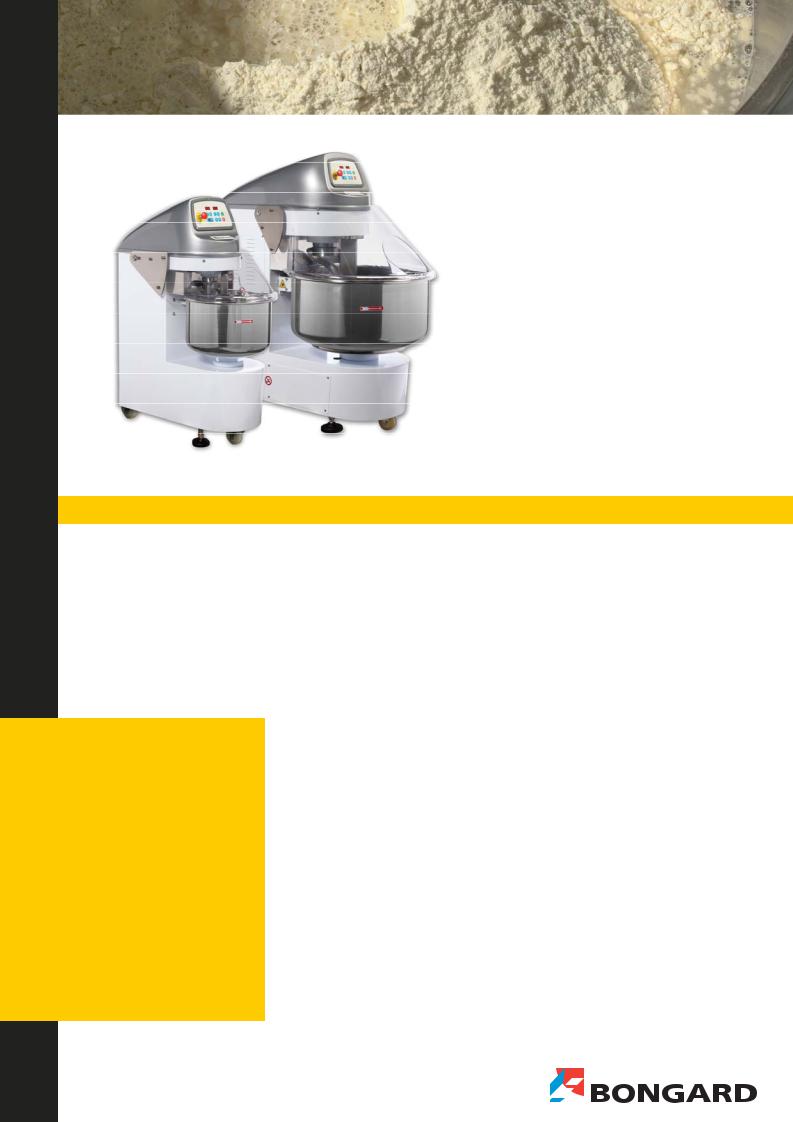Bongard Spiral 200 E User Manual

Spiral 50 E and Spiral 200 E
Performances
Capacity
Flour: from 1,7 kg to 125 kgDough: from 2,7 kg to 200 kg
Pouring: from 1 litre to 75 litres
The advantages
Compact
2 mixing speeds
Reduced mixing timesRegular mixing
Improved dough oxygenation
Low temperature rise of the dough
Allows to mix small quantities of dough
Machine complies with 
 standard
standard
Spiral
Spiral mixers with fixed bowl
Use
Mixing is the 1st bread-making operation that mixes the raw materials and makes the dough. Bongard spiral mixers Spiral are used in the manual mixing process including following phases : mixing the ingredients in a dough mass, cutting the dough for homogenization, consistency, softness and elasticity, stretching and oxygenation to improve dough whiteness, increase its extendibility and fineness. For professional use, they are ideal for all types of dough.
Operating principle
The different ingredients are placed in the mixing bowl. The 1st speed is used for initial blending of ingredients. The 2nd speed is used to cut, stretch and air the dough. The different controls offer the possibility of manual or automated management.
Construction
Epoxy painted body (food grade) on castorsStainless steel arm, bowl and dividing bladeHot-formed anti-shock ABS top cover.
Electronic control with high resistant membrane on keyboard
Mixing time setting for 1st and 2nd speed
Spiral 50 and Spiral 70 have a single common motor for bowl and spiral
The other models are fitted with two motors : one for the bowl and one for the spiralPower supply : 400V 3 PH 50 Hz (on Standard models)
Optional:
Stainless steel frameSpecial voltage
Different models
Safety see-through lid
Type E : Electronical control panel with high resistant membrane on keyboardType M : Electromechanical control panel with push buttons and timer(s)
Stainless steel safety grid
Type E : see description aboveType M : see description above
|
|
|
7 |
Bongard reserves the right to alter the characteristics of the models without prior notice - 12/2011 |
|
|
||
|
|
|
